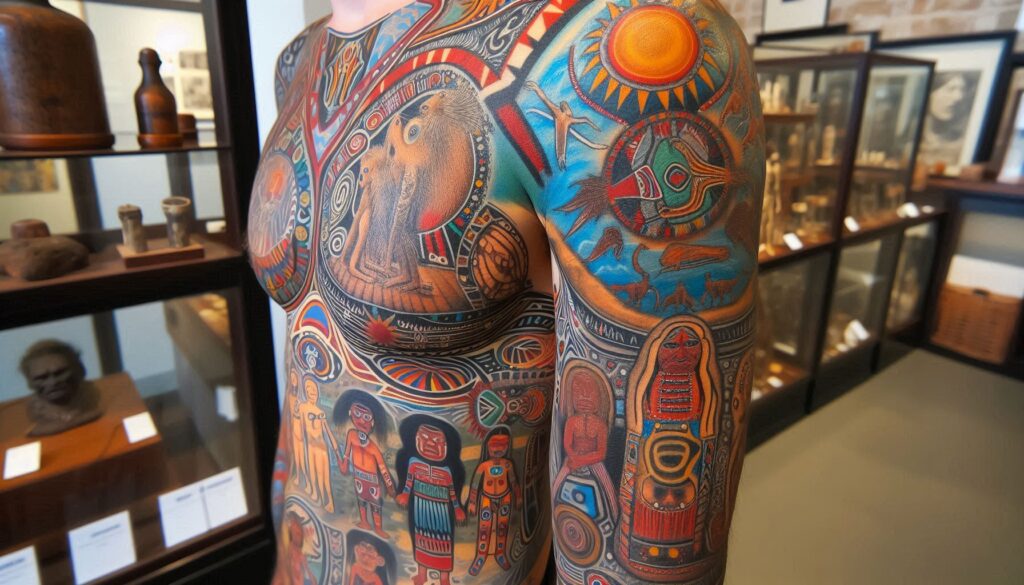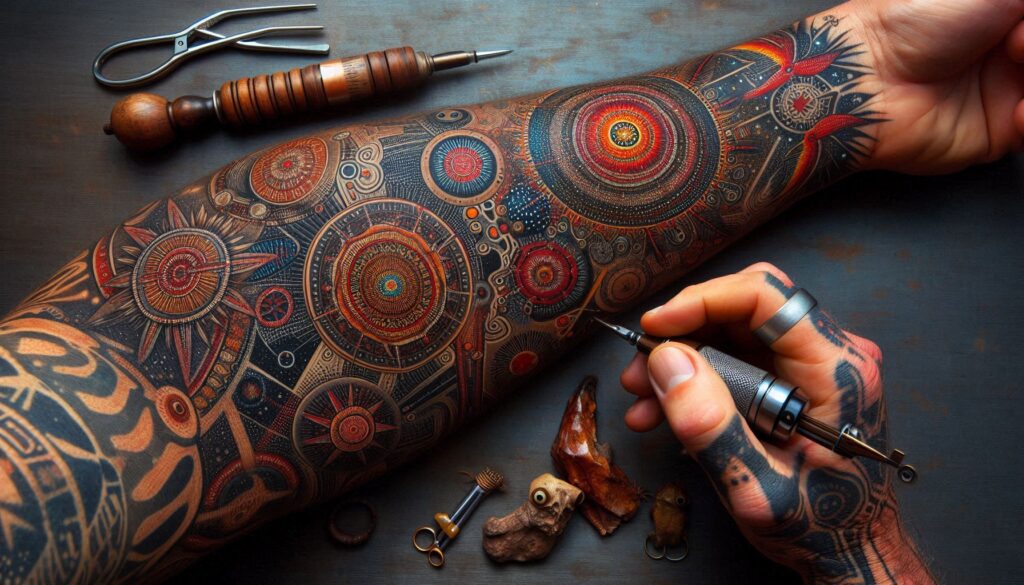The History of Tattoos in Indigenous Australian Culture
Tattoos are often celebrated as modern art forms, but their origins are deeply rooted in ancient traditions, particularly within Indigenous Australian cultures. This intricate form of body art offers a window into the rich tapestry of Australian Aboriginal history, where tattoos were not merely decorative but imbued with profound cultural and spiritual significance. Let’s delve into the fascinating history of tattoos in Indigenous Australian culture, exploring their origins, meanings, and modern revival.
Origins and Early Practices
Tattoos among Indigenous Australians have a history that stretches back thousands of years, long before European colonists set foot on Australian soil. For many Aboriginal communities, tattoos were far more than just skin deep. They were a vital part of cultural expression and spiritual practice.
The practice of tattooing was prevalent across various regions of Australia, each with its unique styles and techniques. Early tattooing methods involved the use of natural tools and pigments. Indigenous Australians crafted tools from materials such as bone, shell, and stone. These tools were used to prick the skin, creating designs that were then filled with natural pigments derived from local resources, such as ochre, charcoal, and plant extracts.
Symbolism and Cultural Significance
The designs of Indigenous Australian tattoos were deeply symbolic, representing a wide range of meanings and purposes. Tattoos were often used to signify tribal affiliation, social status, or personal achievements. They were a way of marking important life events, such as initiation rites or rites of passage into adulthood.
In many communities, tattoos also served a spiritual function. They often depicted ancestral stories, totems, or dreamtime beings, connecting individuals to their cultural heritage and spiritual beliefs. Each tattoo was a form of storytelling, encoding information about a person’s lineage, achievements, or spiritual connection.
For instance, in some northern Australian communities, tattoos were used to indicate clan membership. Specific designs and patterns signified an individual’s role within their clan and their connection to the land. Similarly, southern Australian tribes had their own distinct patterns and symbols, reflecting their unique cultural practices and environmental influences.
Tattooing Techniques and Tools
Traditional tattooing techniques in Indigenous Australian cultures were both sophisticated and diverse. The process involved a meticulous approach to applying designs, often requiring significant skill and precision.

Tattooing tools were crafted from materials that were readily available in the environment. Bones, shells, and stones were shaped into sharp implements for pricking the skin. These tools were sometimes combined with plant-based inks and dyes to create intricate patterns and designs. The pigments were carefully prepared, often involving grinding natural materials into fine powders that could be applied to the skin.
The process of tattooing was not only about the physical act of marking the skin but also involved a deep cultural and spiritual context. The application of a tattoo was often accompanied by rituals and ceremonies, underscoring the significance of the art form within the community.
Impact of European Colonization
The arrival of European colonizers in the late 18th century brought profound changes to Indigenous Australian cultures, including their tattooing practices. European missionaries and settlers often viewed Indigenous customs as primitive or pagan, leading to a decline in traditional tattooing practices. Many of these customs were suppressed or discouraged, and traditional tattooing techniques fell into disuse.
Despite this, the art of tattooing did not completely disappear. It continued to be practiced in some communities, albeit in a reduced form. The suppression of Indigenous tattooing practices reflects the broader impact of colonization on Indigenous cultures, leading to the loss of many traditional practices and knowledge.
Revival and Preservation
In recent decades, there has been a resurgence of interest in traditional Indigenous Australian tattooing. This revival is part of a broader movement to reclaim and preserve cultural heritage. Modern Indigenous Australian tattoo artists are rediscovering and reinvigorating ancient practices, blending traditional designs with contemporary styles.
This revival is not merely about preserving an art form but also about reconnecting with cultural roots and asserting Indigenous identity. Many contemporary Indigenous Australians are choosing to get tattoos as a way to honor their ancestors, celebrate their heritage, and make a personal statement about their cultural identity.
This renewed interest in traditional tattooing practices also serves as a form of political and social commentary. Tattoos can express resistance to historical injustices and advocate for Indigenous rights, contributing to a broader dialogue about cultural preservation and recognition.
Contemporary Practices and Modern Influence
Today, tattoos continue to hold significant meaning in Indigenous Australian communities. They are used to express cultural pride, personal identity, and social commentary. Modern Indigenous tattoo artists are making their mark by blending traditional motifs with contemporary techniques, creating a fusion that resonates with both Indigenous and non-Indigenous audiences.
Tattoo studios like Tattoos Down Under are at the forefront of this revival. They offer a unique opportunity to explore traditional Indigenous tattooing practices while incorporating modern artistic influences. At Tattoos Down Under, you can learn about the historical and cultural significance of various designs and work with skilled artists who are passionate about preserving and celebrating this rich cultural heritage.
The Future of Indigenous Tattooing
The future of Indigenous Australian tattooing looks bright, with a growing appreciation for its historical and cultural significance. As more people become aware of the rich history behind these tattoos, there is hope for a deeper understanding and respect for Indigenous cultures.
Modern tattoo artists are playing a crucial role in this resurgence, helping to educate the public and keep traditional practices alive. By continuing to innovate while respecting ancient traditions, they are ensuring that Indigenous Australian tattooing remains a vibrant and dynamic art form.

Conclusion
The history of tattoos in Indigenous Australian culture is a testament to the rich and diverse heritage of Australia’s First Nations peoples. From ancient practices to modern revivals, tattoos have served as a powerful form of cultural expression, spirituality, and identity. If you’re interested in exploring this fascinating aspect of Australian culture, Tattoos Down Under offers a unique opportunity to connect with traditional tattooing practices. Their commitment to honoring Indigenous heritage while embracing contemporary artistry makes them a valuable resource for anyone looking to learn more about this ancient art form. Discover the beauty and significance of Indigenous Australian tattoos at Tattoos Down Under, where you can experience the artistry and history behind these remarkable designs.


Leave a Reply